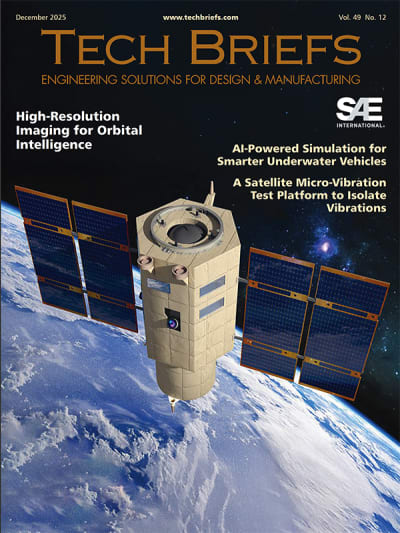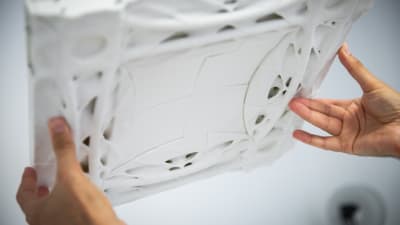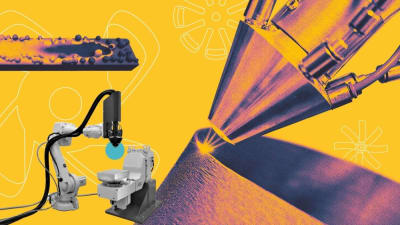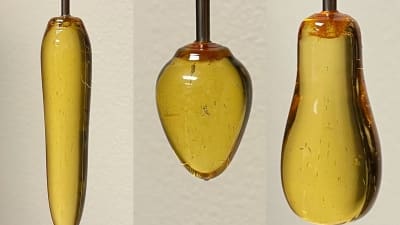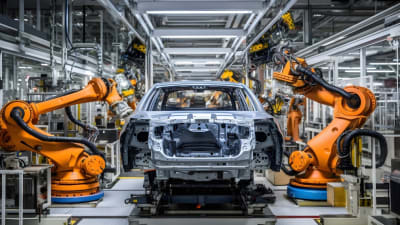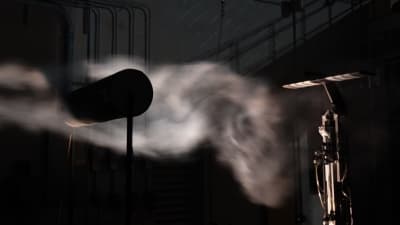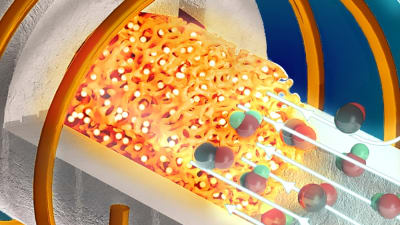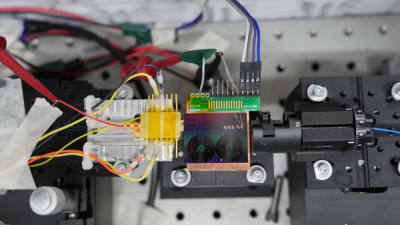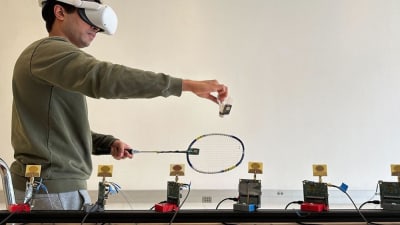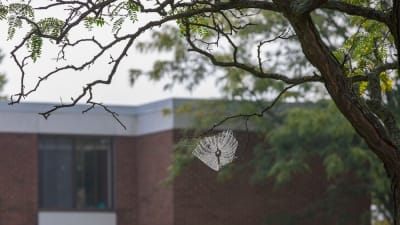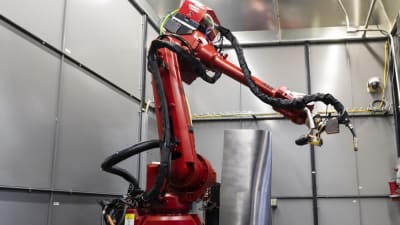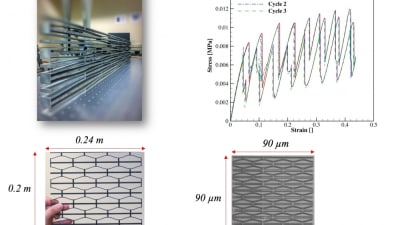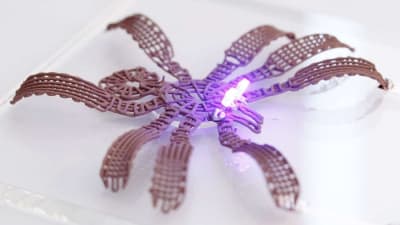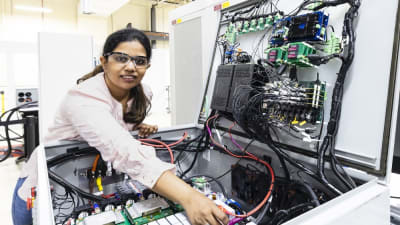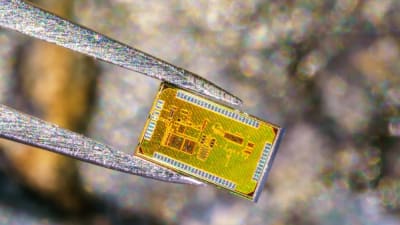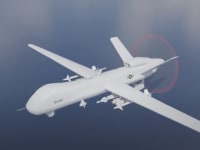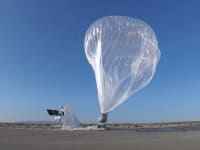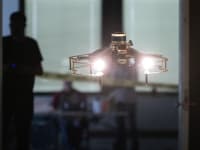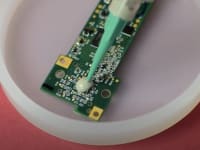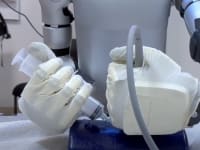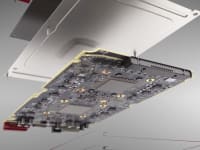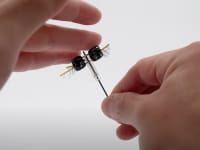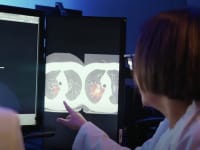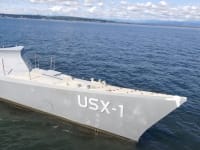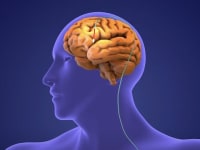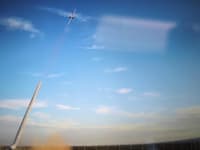61
97,950
-1
0
30
Q&A: Manufacturing & Prototyping
Piyush Upadhyay and his team at Pacific Northwest National Laboratory have developed a self-fixturing tool that can be attached to a robot, freeing friction stir welding from an anvil so it can be used with complex shapes.
Q&A: Green Design & Manufacturing
Shu Yang and her materials research team at the University of Pennsylvania, along with the architect Masoud Akbarzadeh, Director of the Polyhedral Structures Laboratory, have developed a 3D-printed concrete based on diatomaceous earth that has enhanced carbon capture, is strong, and uses less CO2-producing cement.
Q&A: Materials
Professor Ashif Iquebal together with Professor Aviral Shrivastava and their team at Arizona State University are developing methods for improving the quality of highly critical metal parts manufactured using 3D printing.
Q&A: Design
Isabel Arias Ponce and her team at Lawrence Livermore National Laboratory have demonstrated a new resin that simultaneously creates solid objects and dissolvable structural supports, depending on what type of light it is exposed to.
Q&A: Materials
Guhaprasanna “Guha” Manogharan and his team at Penn State College of Engineering and the Center for Innovative Materials Processing through Direct Digital Deposition (CIMP-3D) have developed a method to 3D print complex parts with different materials to achieve multiple design and engineering goals.
Q&A: Materials
Professor Sameh Tawfick and his team at the University of Illinois, Champaign-Urbana have developed a 3D process that grows polymer objects in a controlled manner to achieve a desired shape.
Q&A: Unmanned Systems
Duke University Professor Boyuan Chen and his team have developed a platform called CREW that is used to create algorithms to optimize human-AI cooperation.
Q&A: AR/AI
Qing “Cindy” Chang and her team at the University of Virginia have made a significant advancement in manufacturing technology by developing an AI-driven system that could transform how factories operate. Using Multi-Agent Reinforcement Learning (MARL), the team has created a more efficient way to optimize manufacturing systems, improving both speed and quality while reducing waste.
News: Robotics, Automation & Control
Mohammad Habibur (Habib) Rahman, Director of the BioRobotics Laboratory at the University of Wisconsin-Milwaukee, and his team have been developing a portable, assistive robotic arm that therapists can use to assess and treat patients whether or not they are not in the same location.
Q&A: AR/AI
Matthew Flavin, Ph.D., was part of a team at Northwestern University that developed a haptic patch to convey visual information to unsighted people through an array of multi-function actuators. Now, as assistant professor in the School of Electrical Engineering, he has started a new lab at the Georgia Institute of Technology to continue his work on bioelectronics.
Q&A: Motion Control
Professor Animashree (Anima) Anandkumar and her team at The California Institute of Technology (Caltech) have developed a control strategy for unmanned aerial vehicles (UAVs) that uses reinforcement learning to adaptively learn how turbulent wind can change over time and then uses that knowledge to control the UAV based on what it is experiencing.
Q&A: Physical Sciences
Professor Jonathan Fan and his team at Stanford Engineering have designed and demonstrated a new type of thermochemical reactor that can generate the immense amounts of heat required for many industrial processes by using electricity instead of burning fossil fuels.
Q&A: Medical
Professor Saptarshi Das and his team at Penn State University learned that when it comes to mating, two things matter for Heliconius butterflies: the look and the smell of their potential partner. This led them to think about how multiple sensory inputs could enable more efficient use of AI.
Q&A: AR/AI
Dr. Aaron J. Wilson and his team at Oak Ridge National Laboratory, Lawrence Livermore National Laboratory, and Pacific Northwest National Laboratory have developed The Grid Event Signature Library — an open-access online collection of datasets containing waveforms that are visual representations of behaviors of the electric grid, which can help analyze anomalous events.
Q&A: AR/AI
Professor Chris Reberg-Horton and his colleagues at North Carolina State University’s Plant Sciences Initiative are taking hundreds of thousands of plant photos and, with the university’s newly acquired Grace Hopper 200 supercomputer, are using them to create the world's largest agricultural image repository.
Q&A: Communications
NIST Physicist Franklyn Quinlan leads one of a group of teams working to shrink a table-top system of precise timing technology down to a single integrated chip. This will significantly increase the stability of timing signals used for applications such as GPS, phone and internet connections, and radar.
Q&A: Data Acquisition
Aditya Arun and his team from the Wireless Communication Sensing and Network Group (WCSNG) at the University of California San Diego have developed an asset localization system that uses wireless signals to track physical objects with centimeter-level accuracy in real time, and then generates a virtual representation of these objects.
Q&A: Energy
Prasad Kandula and a group of scientists and engineers at Oak Ridge National Laboratory are developing a modular medium-voltage system to fill the existing gap between high-voltage transmission and low-voltage power electronics.
Q&A: Design
Distinguished Professor of Mechanical Engineering Ron Miles and his team at Binghamton University, New York, have developed an entirely new microphone technology based on research into how spiders hear.
Q&A: Materials
Michael Kirka and a team of researchers at the Department of Energy’s Oak Ridge National Laboratory are the first to 3D print large rotating steam turbine blades. They achieved it with robot-controlled wire arc additive manufacturing.
Q&A: Manufacturing & Prototyping
Javier Ramos, CTO, and his team from Inkbit Corporation, Medford, MA, along with researchers from MIT and ETH Zurich, have developed a 3D inkjet printer that uses contact-free computer vision feedback to print hybrid objects with a broad range of new functional chemistries.
Q&A: Mechanical & Fluid Systems
Doctor Sergiy Kalnaus and his team at Oak Ridge National Laboratory have developed a framework for designing solid-state batteries that focuses on their underlying mechanics.
Q&A: Manufacturing & Prototyping
Professor Pablo Zavattieri and his team from Purdue University have developed an architected material that can dissipate energy caused by bending, compression, torque, and tensile stresses, avoiding permanent plastic deformation or damage.
Q&A: Aerospace
Professor Stephen Lynch, of Penn State’s College of Engineering, along with colleagues at Michigan State University and the University of Wyoming, have developed a process for 3D printing a high-temperature ceramic gas turbine part.
Q&A: Materials
Professor Michael Dickey, of North Carolina State University, and his team have developed a unique process that allows you to print 3D metal objects that have good electric and thermal conductivity as well as good structural properties.
Q&A: Sensors/Data Acquisition
A solar-powered wireless sensor system developed by a Drexel University team can continuously monitor bridge deformation and could be used to alert authorities if the bridge performance deteriorates significantly.
Q&A: Energy
Radha Krishna Moorthy is lead researcher on an Oak Ridge National Laboratory project to create a new architecture to modernize the electric grid from the bottom up. The approach combines hardware and software to monitor equipment health, speed up communication and increase security.
Q&A: Sensors/Data Acquisition
Professor Patrick Mercier and his team at the University of California, San Diego, have developed an RFID smart tag that uses the signals generated by a smartphone to both read and power it.
Q&A: Sensors/Data Acquisition
Zhiqun (Daniel) Deng and a team of researchers at the Pacific Northwest National Laboratory (PNNL) are working to develop a nanogenerator that harnesses the renewable energy of open ocean waves to power observation platforms, and more, in the middle of the ocean.
Top Stories
Blog: Manufacturing & Prototyping
2025 Holiday Gift Guide for Engineers: Tech, Tools, and Gadgets
INSIDER: Electronics & Computers
Scientists Create Superconducting Semiconductor Material
Blog: Software
Blog: Materials
This Paint Can Cool Buildings Without Energy Input
Quiz: Automotive
Blog: Semiconductors & ICs
Webcasts
 Upcoming Webinars: Manufacturing & Prototyping
Upcoming Webinars: Manufacturing & Prototyping
The Real Impact of AR and AI in the Industrial Equipment Industry
 Upcoming Webinars: Motion Control
Upcoming Webinars: Motion Control
Next-Generation Linear and Rotary Stages: When Ultra Precision...
 Podcasts: Energy
Podcasts: Energy
SAE Automotive Podcast: Solid-State Batteries
 Podcasts: Medical
Podcasts: Medical
How Wearables Are Enhancing Smart Drug Delivery
 Podcasts: Manufacturing & Prototyping
Podcasts: Manufacturing & Prototyping
SAE Automotive Engineering Podcast: Additive Manufacturing
 Podcasts: Aerospace
Podcasts: Aerospace
A New Approach to Manufacturing Machine Connectivity for the Air Force
